A portion of this essay was previously written for a school assignment about letting go, entitled “On Action Figures, Loss, and Being An American in Paris.” Clearly, I am incapable of letting go. In writing this piece I wanted to rework the chunk of my previous essay as an experiment for myself, a way to become more comfortable with vulnerable writing. I hope I have succeeded.
I rewatched An American in Paris (Minnelli 1951) recently. As the film has aged, I’ve found that its reputation has soured somewhat. It is constantly compared to director Vincente Minnelli’s other works like Meet Me in St. Louis (1944) or its sister film Singin’ in the Rain (Donan and Kelly 1952). Which is unfair, in my opinion. An American in Paris is better than both of those movies. (Which is a position I will defend with my life). All three of these movies were produced by the legendary Arthur Freed unit at MGM. They are glorious technicolor musicals, featuring some of the best dancing ever captured on film, scored by the entire catalog of the American songbook. And yet, nobody seems to like An American in Paris.
Nobody excludes me. I love An American in Paris. I shouldn’t have to stick up for An American in Paris! This movie won six Oscars! Including Best Picture! It stars four of the greatest performers of all time — Leslie Caron, Oscar Levant, Georges Guétary, and the Gene Kelly. It looks like this!
I do not think I am exaggerating when I say that it is easily one of the greatest American movies ever made.
And yet, here I am sticking up for it. Defending this masterpiece of a movie on Beyoncé’s internet.
I think a large part of why An American in Paris does not work for a lot of people the same way Singin’ in the Rain does or any other MGM musical from that era, is that unlike other “show musicals” or musicals about artists, An American in Paris is about the craft of art, and it is about how art is draining and most of the time, unsuccessful. The film follows two American ex-pats after the Second World War who want to try for that Bohemian lifestyle they always imagined. These men are clearly in the style of Ernest Hemingway and Man Ray. They want to live in Paris and be artists, but they do not have the drive or the financial means to do so. The film opens in Jerry Mulligan (Gene Kelly)’s one-room apartment, which he has fashioned into a bedroom, a kitchen, and a studio.
It is clear that not only is he living on unsubstantial means — his bread is moldy, his rent is due, his bed is suspended by pulleys — he is living an unsuccessful life. He has no prospects, no clientele, and no means to pursue the artistic life he wants. His dreams of being the next Pablo Picasso are becoming more and more unrealistic.
Equally as unrealistic is the life of his neighbor, Adam Cook (Oscar Levant) who has been living in Paris for years off of a combination of a grant and a scholarship. Adam has been trying to write a symphony and it is clear as the film progresses, that he will never achieve this goal. In the second of the film’s three dream sequences, we see Adam’s promised symphony, except not only is he conducting, but he is also playing every single instrument. He is doing all the work himself. When the symphony finishes, the only person congratulating the work is himself. When he breaks from his reverie he walks away from his piano. He will never achieve this dream. It is just a dream, and he is wasting his life away on one Franc coffee and piano melodies.
This is the unrealized dream of An American in Paris. One will never be happy in Paris. The dream is just the dream. There is nothing else there.
The more and more I visit Paris, the more I find myself disliking it (what a privilege to say that at twenty-one). I find the city suffocating and boring, full of false romance and overpriced wine. Whenever I am in Paris, I find myself faced with this overwhelming pressure to do everything in Paris. “You have to go to the Eiffel Tower. You have to go to the Arc d’Triomphe. You have to see the Mona Lisa. You have to visit La Musée D’Orsay. If you have time you have to go visit the Palace at Versailles. You have to go to this little café I found once,” and on and on and on. I think one could spend a lifetime in Paris and never truly experience it because they spent the whole time trying to experience Paris. It is a trap, and it is a plague. I truly believe the last person to be happy in Paris was Gene Kelly in An American in Paris. (And despite Jerry Mulligan’s lack of prospects, somehow, he is happy).
I say this and yet, my favorite piece of art is in La Musée D’Orsay. I say this and I bought my favorite book in Paris. I say this and Notre Dame is in Paris. I say this and I love Paris.
In D’Orsay, Claude Monet’s “Camille on Her Deathbed” hangs. Monet painted this after his first wife, the titular Camille, died. She was only thirty-two. Monet was devasted, experiencing profound grief. The pair had only been married for nine years (they married on June 28th, 1870, my birthday) but their marriage was full of love and good spirits. Camille and Claude had two sons together, and it was after the birth of their second son that her health began to decline. She died in September 1879.
To me, this painting encapsulates everything I love about art. Faced with unprecedented grief and emotional turmoil, Monet painted his wife as he last knew her – dying. It looks like she is lost in a snowstorm, the blankets bundle up around her. The painting lacks Monet’s usual detail, the whole thing looks blurry and amorphous. Even Camille’s face, usually so detailed in Monet’s other work, is obscured here. It is raw and emotional. I have seen it three times, and each time it makes me cry.
My favorite bookstore is in Paris. The famed Shakespeare and Company is right across the river from Notre Dame. It is here, where in 2016 my father bought me a copy of Agatha Christie’s Murder on the Orient Express. Orient Express has become so dear to me, that when I was back in Paris in 2022, I needed to return to the bookstore.
The copy of Murder on the Orient Express my father bought for me comes with me everywhere. To every new apartment and on every plane trip. It is a small, trade paperback that has faded with age. The pages have started to yellow, and the book now smells of old books. Nearly every page is dog-earned or tabbed and it is filled with annotations from when I first read it, desperately trying to solve the mystery along with Hercule Poirot. Of course, now I have reread this book so many times I do not need to solve the mystery along with him. I know the mystery. But I am never unsatisfied when Poirot assembles the suspects in one room and says, “‘there are two possible solutions of the crime. I shall put them both before you, and I shall ask M. Bouc and Dr. Constantine here to judge which solution is the right one” (Christie 228). When I travel aboard the Orient Express along with M. Poirot once again, I am never faced with a feeling of nostalgia.
Looking at the book, I see myself at thirteen, reading it for the first time. I see myself on the banks of the Seine, reading it again. I see myself a few months ago when I reread it while shelving at my retail job. When I am reading, the voices in my head sound like the audiobook. Christie by nature is not a descriptive writer, and her books are never full of flowering prose, but when she writes, “It was five o’clock on a winter’s morning in Syria,” (3) I know that line so well that I feel like I am on the platform at Aleppo. Hercule Poirot and I are old friends. Olivia Daste once wrote that "memories evolve with you, through you. Objects don't have this fluidity;” an object is static; you have to evolve despite the object. Orient Express does not change, but I do. There is no nostalgia associated with the story, just like there was no nostalgia as I returned to Shakespeare and Company. Both just were. It is an interesting thing to love without nostalgia, without longing. I do not yearn to return to the Orient Express or Paris, I have just found myself there, time after time.
Notre Dame is in Paris, and this is perhaps the most loaded landmark in Paris for me. It is filled with capital N Nostalgia and surprise! This is because of high school theatre. (I wish I could tell you that I will not keep mining this well for my personal essays but…well, I am not going to stop so you’ll have to deal with it.) . In truth, I do not know how to write about Notre Dame. I do not know if I can ever properly articulate my feelings on it.
When I was a senior in high school, I got the chance to direct my senior year musical, — The Hunchback of Notre Dame. This was not a position I took lightly, and it was one I fought really hard for. Two months into production, everything went to hell in a handbasket and my teacher was fired for harassing the cast. He was always a cantankerous sort of man, and for the most part, I was happy to see him go. But now I was seventeen and directing a musical, without an adult to tell me how to do it. It was the worst experience of my life up until that point. (Somewhere in China, a highly contagious illness was beginning to spread, but that wouldn’t change my life for a couple more weeks.) I was always panicking. This experience traumatized me. I had the responsibility of three adults suddenly placed on me and I needed to keep all of the plates spinning.
This is the part that I can’t bring myself to confront. Years later, I think to myself that it shouldn’t have been that hard before I remind myself it shouldn’t have been like that period. I shouldn’t have been placed in that position, ever. I shouldn’t have thought that it was my responsibility. And yet… And yet…
After Hunchback closed, I stopped doing theatre. Every new show reminded me of the pressure and the stress of Hunchback, I was worried every new theatre teacher was going to turn out just like my old one. Cutting off theatre felt like cutting off a limb. For years of my life, it was my only creative outlet; it was the only thing I knew how to do. It was the only thing I liked to do. I did not know who I was without it. I had to rebuild my creative mind from the ground up. I am still in the process of doing that.
Of course, I did not cut theatre out entirely. I returned to it to try to teach. In 2022 when I moved to Ireland, I directed another play. But both things have never felt right. It still feels like something is missing. I still feel the trauma from Hunchback. It is like a scab that I keep picking at and reopening whenever I enter a theatre. I am grieving. I am mourning the loss of my high school theatre troupe. Of those friends and that crew. I will never get that back, and it will never be a positive experience. I can find the joy in it but hidden beneath that joy is so much pain. Try as I might, I cannot let go of theatre. I think I am looking for the pain.
Sitting in front of Notre Dame, I could not let go of theatre. I sat down and began to draw the cathedral’s façade. I wanted something to remember that I was here, something that was not a photograph. The drawing was not enough. I still found myself nostalgic for high school.
This is my least favorite part. Trying to let go. Sitting in front of this facade, looking at the children playing with the ducks, drawing the cathedral so I would have something real, I started to cry. I didn’t know what to do with myself. I am clinging so tightly to this lost identity of “theatre maker.” I still do not know who I am if I am not a theatre maker. I was a theatre maker for so long. I told someone recently that I was a performer in some capacity for eighteen years and they seemed shocked that someone could do something for so long and then all of a sudden stop. I shrugged and told them that eventually I just didn’t feel like putting myself out there anymore. It was a simpler story. A less complicated one than the one I just told you. An easy lie.
I get not liking An American in Paris. I really do. The plot is thin, Leslie Caron and Gene Kelly have very little chemistry, and if you don’t like dancing, there’s not a lot else here for you. It does not have the flashy musical numbers of Singin’ in the Rain or the swoon-worthy love story of Top Hat. It’s all style and no substance. And on top of that, it’s sad. This movie is the upsetting story of three artists who never get what they want. One has to accept that at the end when Lisa seemingly stops the car and rushes back to Jerry’s arms, Jerry is still dreaming. Or, at the very least, if the camera didn’t pan up, the pair would make their way down the street only to be confronted with a The Graduate style, “what do we do now?” look on their faces. Because what do they do now?
In part, I guess you have to keep moving on. You have to make art. Because one can’t live on dreams alone like Adam the concert pianist does. As Lisa leaves Jerry, she tells him that she hopes Paris will help him forget her. He replies “Paris? No. Not this city. It's too real and too beautiful to ever let you forget anything. It reaches in and opens you wide and - you stay that way.” It is a gaping maw, a cesspool of a city, designed to intrigue wannabe romantics and artists in pursuit or something greater or something romantic. Jerry loves Paris, and he hates Paris. He hates Paris for making him love Paris. It’s circular that way.
I don’t know if there is something greater or more romantic out there. Or even if there’s any merit to art without purpose. I’d like to think so. Art is one of the few things we know humans do uniquely. Other animals don’t make art the same way we do. There has to be something to that.

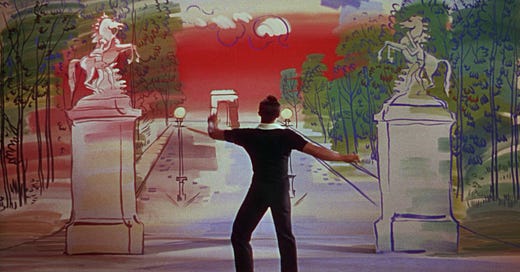



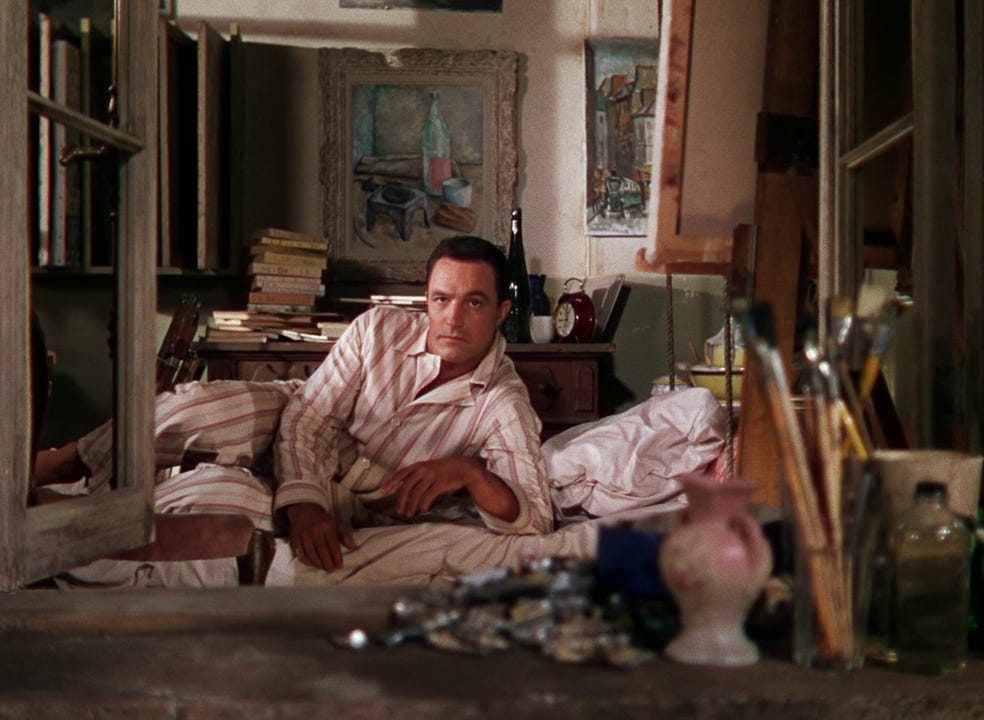
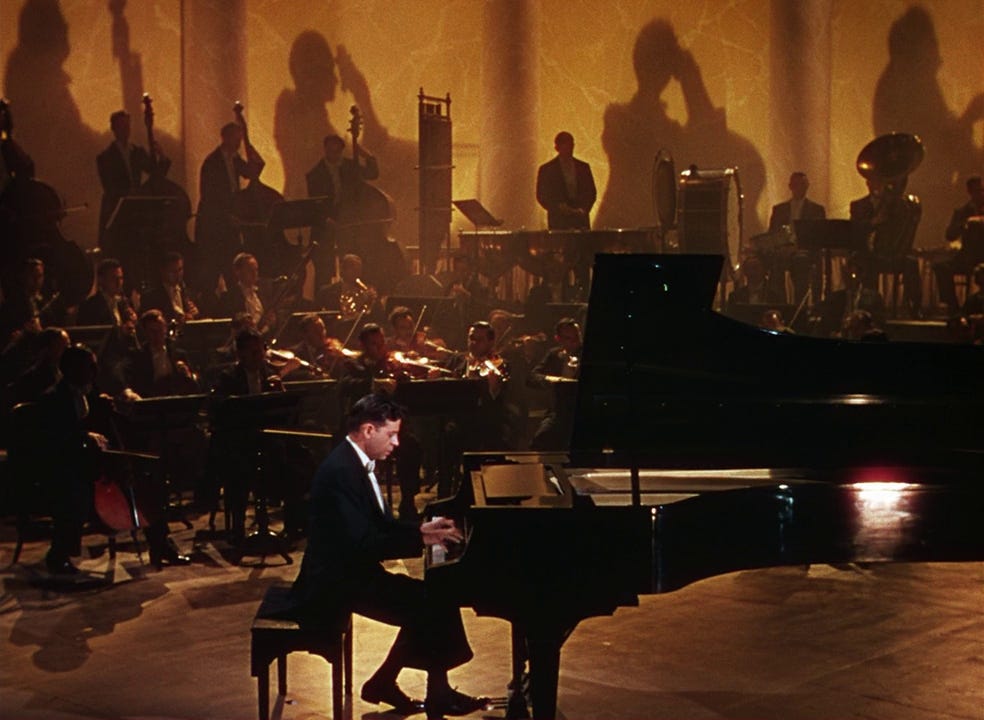
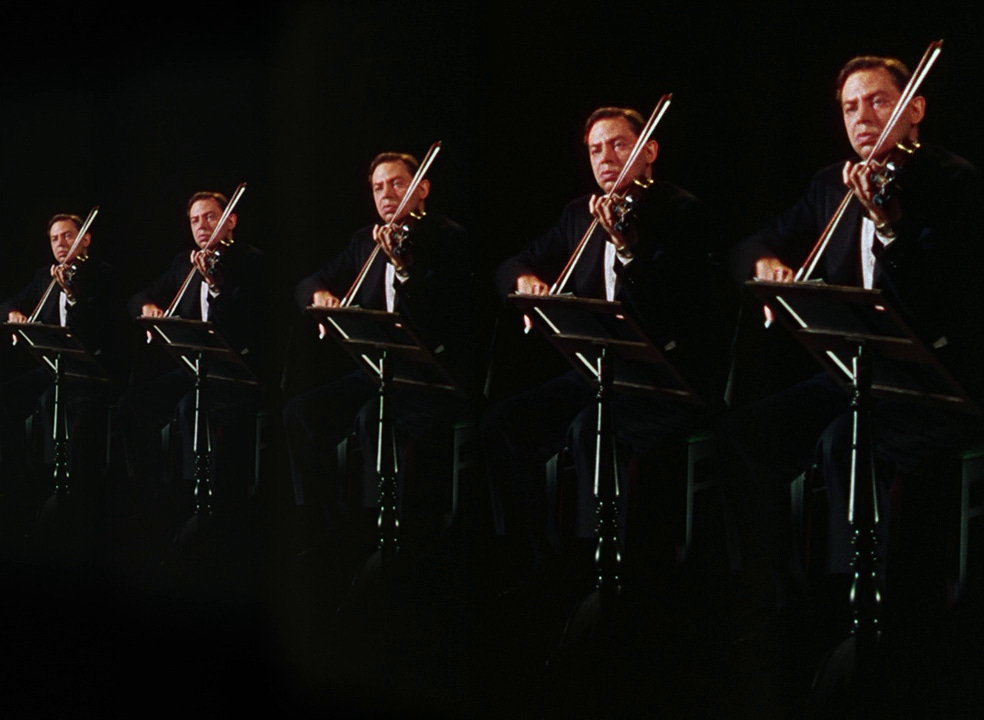


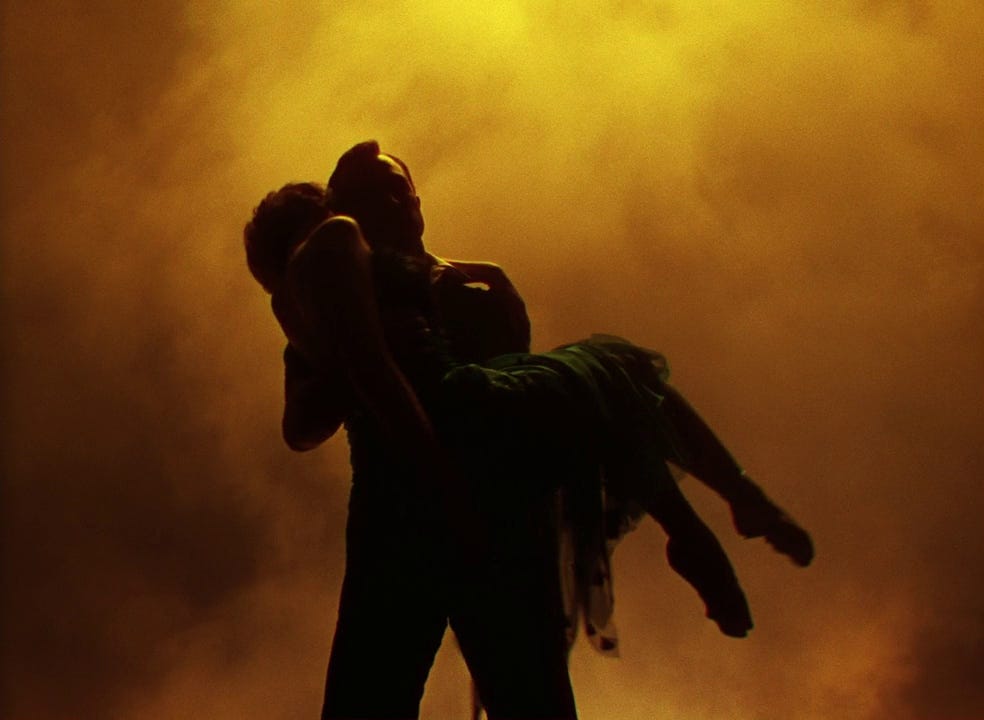
damn youre a good writer WOW
I searched letterboxd for someone who had two of my top four in their favorites. You were the only one who had All That Jazz and An American in Paris. It’s amazing to see someone else sees this movie and loves it! I rewatch it every New Years.